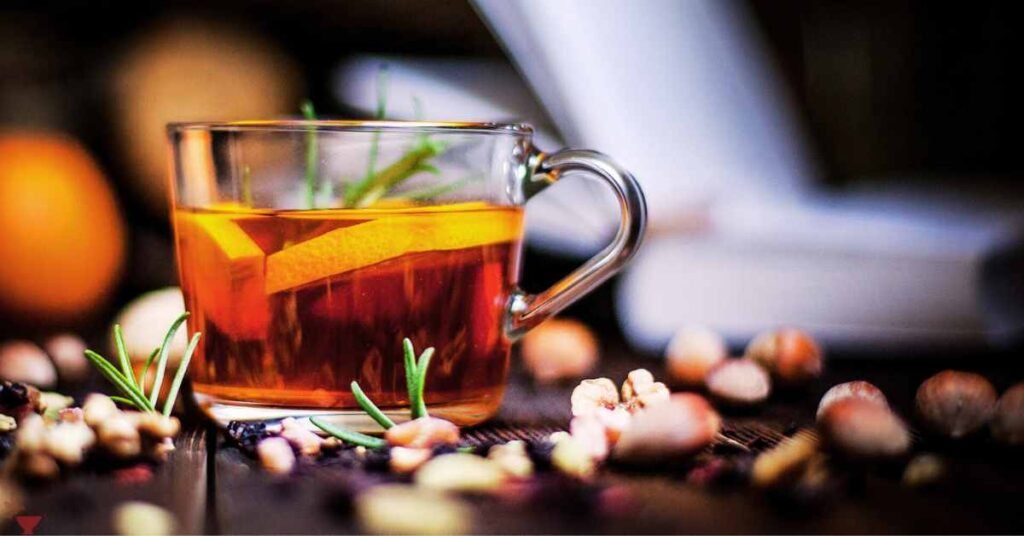Pu-erh tea, hailing from China’s Yunnan Province, is renowned for its rich history, unique production process, and distinctive flavor profile.
Unlike other teas, Pu-erh is fermented, a process that significantly influences its characteristics and appeal.
This article delves into the defining traits of Pu-erh tea, exploring its origins, types, aging process, health benefits, and cultural significance.
Origins and History

Pu-erh tea has a storied history dating back over a thousand years.
It is named after the town of Pu’er in Yunnan Province, a key trading hub during the ancient Tea Horse Road era.
This historical trade route facilitated the exchange of tea for horses and other goods, spreading the popularity of Pu-erh tea far and wide.
The tea’s production and consumption have been deeply embedded in the local culture, with traditional methods passed down through generations.
Unique Production Process
The production of Pu-erh tea distinguishes it from other teas.
It involves several steps, including withering, rolling, drying, fermentation, and aging.
The fermentation process is what sets Pu-erh apart, creating two main types: Sheng (raw) and Shou (ripe) Pu-erh.
- Sheng Pu-erh: This is the traditional form, made from sun-dried Maocha (loose tea leaves) and left to age naturally. Over time, the tea undergoes a slow fermentation process, which can last from several years to decades. Sheng Pu-erh is prized for its complexity and depth of flavor, which evolves as it ages.
- Shou Pu-erh: Developed in the 1970s, Shou Pu-erh undergoes an accelerated fermentation process, also known as wet piling. This method mimics the aging process of Sheng Pu-erh, allowing the tea to develo
- p its characteristic flavors in a much shorter time. Shou Pu-erh is typically smoother and darker than Sheng Pu-erh.
Flavor Profile
Pu-erh tea is celebrated for its unique and complex flavor profile, which varies depending on the type and age of the tea. Common tasting notes include:

- Earthiness: A defining characteristic of Pu-erh, especially in aged varieties, is its earthy, rich, and often woody flavor. This is more pronounced in Shou Pu-erh due to the fermentation process.
- Sweetness: Both Sheng and Shou Pu-erh can exhibit a natural sweetness, which becomes more pronounced as the tea ages. This sweetness often balances the earthy and woody notes.
- Smoothness: Aged Pu-erh teas, particularly Shou Pu-erh, are known for their smooth, mellow texture, making them easy to drink even for those new to Pu-erh.
- Complexity: High-quality Pu-erh teas offer a complex array of flavors, with hints of floral, fruity, or nutty notes emerging in well-aged Sheng Pu-erh. Each sip can reveal new layers of taste, making the tea experience dynamic and engaging.
Health Benefits
Pu-erh tea is reputed for its numerous health benefits, many of which are attributed to its unique fermentation process.
Some of the key benefits include:
- Digestive Aid: Pu-erh tea is traditionally consumed after heavy meals in China, as it is believed to aid digestion and help break down fats.
- Cholesterol Reduction: Studies have shown that Pu-erh tea can help lower LDL (bad) cholesterol levels, contributing to better heart health.
- Weight Management: The tea’s ability to aid in fat metabolism makes it a popular choice for those looking to manage their weight.
- Antioxidant Properties: Like other teas, Pu-erh is rich in antioxidants, which help combat free radicals and support overall health.
Cultural Significance
Pu-erh tea holds significant cultural importance, particularly in Yunnan Province. It is often associated with traditional Chinese medicine and is a staple in local diets.
The tea is also a symbol of status and wealth, with aged Pu-erh cakes sometimes fetching exorbitant prices among collectors and enthusiasts.
The process of aging and brewing Pu-erh tea is considered an art form, with connoisseurs appreciating the nuances that time imparts on the tea.
Final Word

Pu-erh tea’s defining characteristics stem from its unique production process, complex flavor profile, and rich cultural heritage.
Whether enjoyed for its earthy taste, health benefits, or historical significance, Pu-erh tea offers a distinctive experience that sets it apart from other teas.
As it continues to age and evolve, Pu-erh tea remains a cherished gem in the world of tea, captivating both seasoned connoisseurs and new enthusiasts alike.
MEDICAL DISCLAIMER
Itsnevernotteatime.com cannot and does not contain medical/health advice. The medical/health information is provided for general and educational purposes only and is not a substitute for professional advice.




